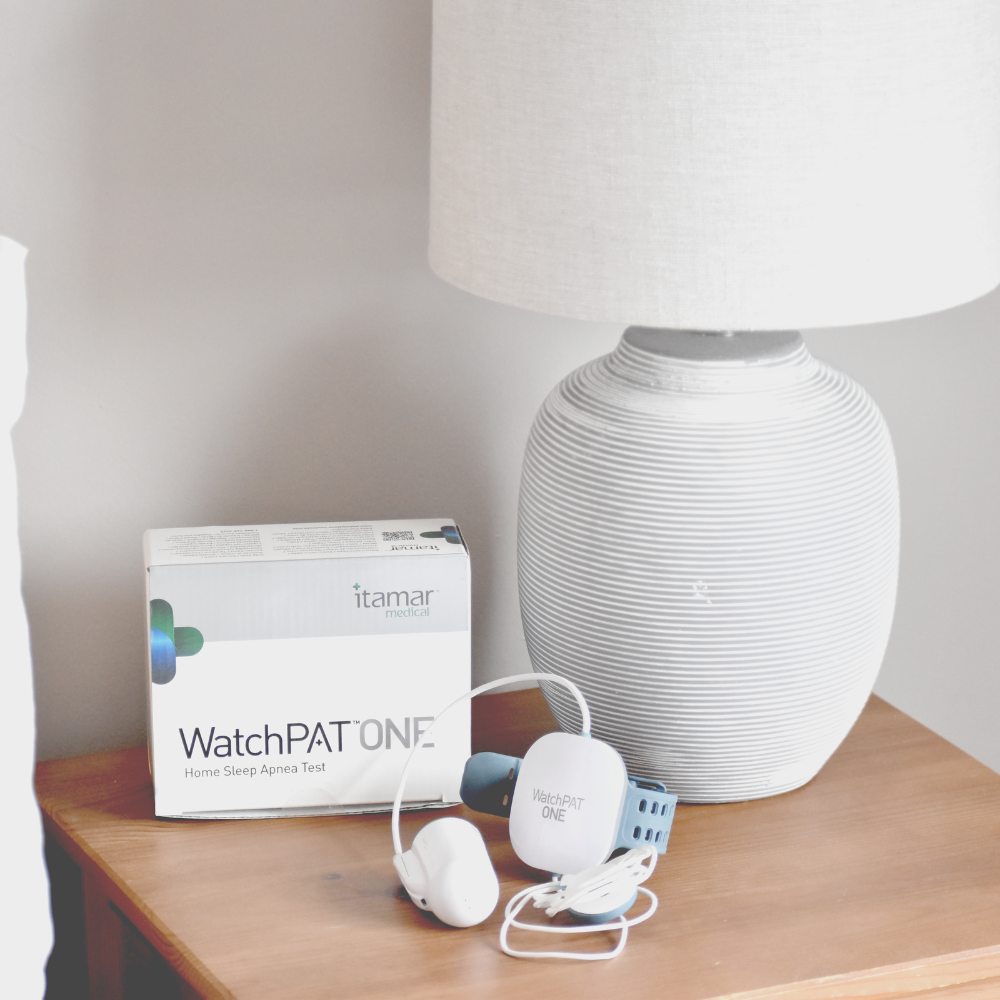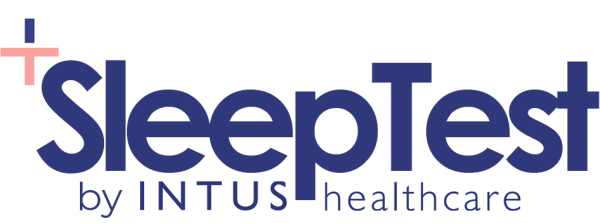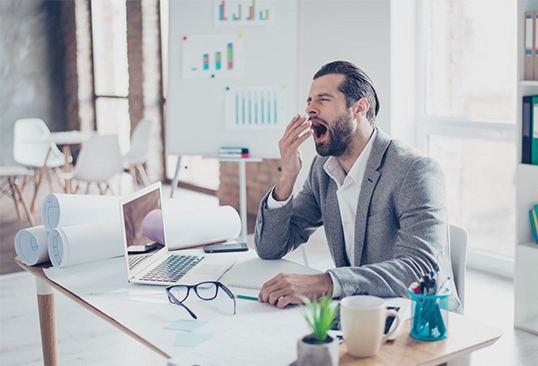Fact Checked
Intus Healthcare’s writers, customer service team, and sleep experts review and ensure this information is accurate.
Last updated on March 28th, 2025 at 02:31 pm
Excessive sleepiness could be a sign of an underlying condition; this article will examine what excessive sleepiness is and its connection to Sleep Apnoea.
Table of Contents
What is Excessive Daytime Sleepiness?
Excessive daytime sleepiness (EDS) is a condition characterized by a strong and overwhelming need to sleep during the day, even after a full night‘s rest. People with EDS may have difficulty staying awake during the day, even when participating in activities they enjoy. They may also have difficulty concentrating and focusing on tasks. EDS can cause fatigue, irritability, and other symptoms that can interfere with daily functioning.
What causes Excessive Daytime Sleepiness?
Several factors can contribute to excessive daytime sleepiness. Common causes include lack of quality sleep at night, sleep disorders such as Sleep Apnoea, shift work, and lifestyle factors such as too much caffeine or alcohol use. Certain medical conditions, such as narcolepsy, can also cause EDS.
EDS and Sleep Apnoea
We all experience tiredness during the day from time to time. Yet, for those who suffer from Sleep Apnea, Excessive Daytime Sleepiness (EDS) can be a major issue. The most common form of this disorder is Obstructive Sleep Apnea, where the upper airways narrow and block as you sleep. The brain responds by waking you up for air, and depending on the severity of your disorder, this can happen many times during the night.
These frequent interruptions to sleep cause daytime fatigue and the feeling of drowsiness too. Obstructive Sleep Apnoea (OSA) is a fairly common disorder, yet it is estimated around 85% of sufferers are unaware they have the condition. Sleep Apnoea is a treatable condition, and once diagnosed, you can return to getting proper sleep and symptoms such as Excessive Daytime Sleepiness will be a thing of the past.
EDS is just one of the symptoms of Sleep Apnoea. If your EDS is accompanied by one or more of the following symptoms, you should contact your GP and consider taking a sleep test. A sleep test can help rule out the possibility of Sleep Apnoea as the cause of your sleep problems.
Other symptoms include:
A simple in-home sleep test can provide an initial diagnosis if you feel you could be suffering from OSA.

Home Sleep Apnoea Test
The test monitors your heart rate, snoring intensity, blood oxygen levels, body positioning, and more, providing accuracy comparable to testing used in sleep clinics for in-depth sleep analysis.
The simple-to-use test takes just one night to complete, and results are returned within two working days after completion.
Our experienced NHS-qualified sleep professionals independently analyse all studies, providing follow-up advice and support.
Tips to Combat Daytime Sleepiness
Excessive Daytime Sleepiness (EDS) affects productivity at home and at work and increases the risk of a traffic accident. Finding the root cause of your daily fatigue is paramount, so you should consult your GP or arrange a private, overnight sleep study.
In the meantime, here are a few suggestions to help alleviate your daytime sleepiness.
Sleep Well
If you work from home or have a hybrid working arrangement, have a bite to eat for lunch and then have a power nap. Getting your head down for between 15 and 30 minutes is often enough to recharge your batteries and prepare for the afternoon.
Research shows that napping can boost memory and productivity. According to NASA, a 26-minute nap is the perfect length! The space agency found that pilots who took a 26-minute nap improved their alertness by 54% and their performance by 34%.
Sleeping well is, of course, the main way to avoid daytime fatigue, but for those who are unaware they have OSA, this is easier said than done. Improving your sleeping environment can help you fall asleep. This can include ensuring a dark, quiet bedroom with a comfortable temperature.
You should:
- Remove screens and blue lights (TV, tablets, laptops) from the bedroom
- Avoid alcohol and caffeine four hours before you sleep
- Avoid food items high in sugar before going to bed
Get Up and Move Around
Regular exercise can help with sleep. However, if you sit for long periods of the day for work, you should also look to get up frequently and move around. If possible, you should routinely stand up, stretch, and have a wander around. This can be easier when working from home, where you can quickly stroll through the house.
Doing this every 30 to 40 minutes will get the blood flowing, which helps make you more alert and less sleepy.
If you are working in an office and feel this is impossible, you can still introduce movement to keep the blood flowing around the body by fidgeting in your chair or shaking out your arms and legs.
You can also choose to take a walk at lunchtime so you feel alert for the afternoon.
Eat Well
Be aware of your food and drink choices in the afternoons and before bedtime; heavy meals, spicy foods, and hidden caffeine (in chocolate and other foods/drinks) will affect your sleep.
Also, be aware of the effect that certain foods have during the day. The tendency can be to go for a high-sugar snack to boost waning energy, but eating healthy and balanced meals is more effective at combating Excessive Daytime Sleepiness (EDS).
Foods rich in complex carbohydrates, such as whole grains, fruits, and vegetables, can help provide sustained energy throughout the day. Protein–rich foods such as lean meats, fish, nuts, and legumes can also help boost energy. In addition, foods that contain vitamins and minerals such as B vitamins and iron can also help provide energy.
Environment Matters
Our environment can affect many aspects of our lives. Most of us can appreciate how a sunny day perks up our mood. This can also be transferred into our daily lives at work if we are stuck in a workplace or a cubicle deprived of natural light. Indeed, research indicates that those working in black cubicles may be less productive.
Sunlight can invigorate and remove the feeling of fatigue. Try to go outside during your lunch break. If there are no windows in the immediate vicinity of your desk or cubicle, try using a light box, which emits a low level of UV light to imitate the sun’s effect.
In fact, exposure to sunlight in the morning can help set your natural melatonin, so your body naturally feels the need for sleep at night.
Take an Electronic Break
The constant attention to digital screens often demanded in a modern workplace can be demanding and tiring. With emails and social media, this does not always go away when we go home, either. Look to have a screen-free lunch break and have at least one technology-free hour in the evening at home.
Break the Silence
Silence, although very welcome at times, can encourage a feeling of sleepiness over a period of time, especially at work. If your workplace is quiet or if you are working at home, then you may need something to break the silence.
This is when some of your favourite music can increase your attention levels and boost your overall alertness. Music can be an easier solution when based at home, but not always welcome in the workplace. If you’re lucky, your boss will know how silence can make you drowsy and affect your productivity. Ask if you can bring in earbuds to help give you a boost when required.
Obstructive Sleep Apnoea is a disorder which can have a large impact on your daily life. Staying busy at work can help keep minds focussed and concentrated, but for those with OSA, the sleep deprivation resulting from the condition can be hard to counter.
Do You Need a Sleep Test?
These tips can improve alertness and reduce daytime sleepiness. However, it is important to diagnose or rule out any unlaying health conditions. If there is a more serious reason for your EDS, then receiving the appropriate course of treatment can help you return to proper restorative sleep.
By taking a simple at-home test, you have a fast, convenient way to see if Sleep Apnoea is the cause of your EDS. Left undiagnosed, the disorder can increase the risk of heart disease, stroke, high blood pressure, type 2 diabetes and further serious health issues.
Untreated OSA leads to nights of frequent interruptions to sleep, resulting in fatigue from sleep deprivation. Only following a diagnosis can you address the condition and receive the treatment you need to help reduce the risk of these serious health problems. This will also reduce your fatigue throughout the day, which can be detrimental to your personal and professional life.
An In-Home Sleep Test is an efficient alternative to the NHS sleep clinic, and you’ll receive your results within two working days of completing it.
If you have any questions about your symptoms or OSA in general, please do not hesitate to contact us for help and support.
About Our Editorial Team
Danni is a degree-educated content writer passionate about helping those with Sleep Apnoea sleep better; she works closely with our clinical and customer care teams to ensure that each article is thoroughly researched and accurate.
Her writing aims to inform, support, and advise readers about Sleep Apnoea, helping to raise awareness and promote effective treatment options.
She has written many health-focused articles, reaching hundreds of readers annually, to help people sleep better and live healthier lives.
Lateisha King is an experienced Sleep Clinician with advanced training in polysomnography and respiratory health.
With over six years of experience, including at the prestigious Guy’s and St Thomas’ NHS Foundation Trust Hospital, she has conducted and reviewed more than 500 diagnostic sleep studies.
Her expertise in sleep science ensures that all articles align with the latest data and treatment protocols, providing readers with trustworthy and practical advice to improve their sleep health and overall well-being.
Published: April 21, 2020





